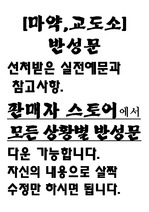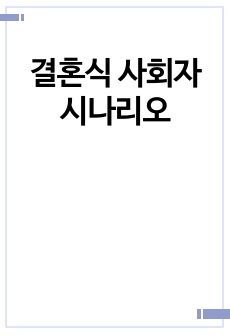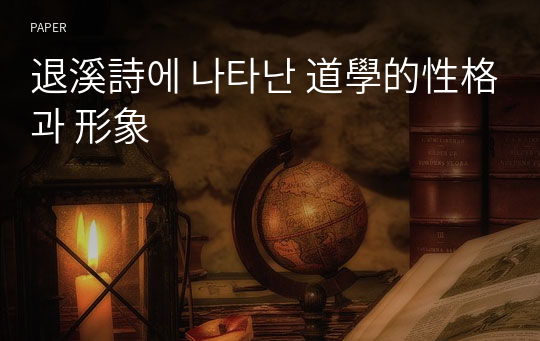* 본 문서는 배포용으로 복사 및 편집이 불가합니다.
서지정보
ㆍ발행기관 : 영남퇴계학연구원
ㆍ수록지정보 : 퇴계학논집 / 5권
ㆍ저자명 : 金榮淑
ㆍ저자명 : 金榮淑
목차
1.서언2. 퇴계시의 실상과 유형
3. 퇴계시에 나타난 도학적 성격
4. 퇴계시에 나타난 도학적 형상
5. 결어
한국어 초록
퇴계 이황(1501~1570)은 조선 시대 도학자로서 생애가 연보, 행장에 자세하게 기록되어 있다. 제자들이 기록한 언행록에 학문태
도, 교육방법, 예의 실천, 사제우의가 잘 나타나 있어 학술 논문에
서는 언급할 필요가 없을 정도다.
이황은 2330 수의 시를 지어 도학자이면서 시인이다. 이 시들은
문집에 실려 있는데 그 종류가 매우 다양하다. 형식도 다양하고
내용이나 소재면에서도 다양하다. 詠物詩, 梅花詩. 說理詩, 和答詩
卽事詩, 詠懷詩가 주축을 이룬다. 題畵詩, 輓詩. 四言詩, 六言詩, 醉
夢詩, 社會詩, 憂國詩, 詠史詩, 紀行詩, 樂府詩는 부분적이긴 하지
만 전체시에서 뺄 수 없을 만큼 중요하다. 유형이 다양하기에 지
금까지의 연구도 그만큼 다양하다.
이 시들의 근원과 배경이 되는 것은 도학사상이다. 따라서 이황
의 시는 도학적 성격을 지니고 있다. 도학적 성격을 지니고 있기
에 감흥이 적고 낭만적인 면이 적게 나타나 있다. 대신에 도덕과
학문, 정심, 수신을 강조했고, 격물과 치지를 작품에 함융시켰다.
이황 자신도 “나의 시는 고담하여 남들이 그리 좋아하지 않는
다,”라고 하여 세인들이 좋아하고 세인들의 흥미와 즐거움만 추구
한 것을 좋아하지 않았다. 제자들이 지은 시를 보고, 표현이 아름
답고 생각이 뛰어난 것이라도 도덕과 학문이 함축되지 않으면 좋
은 시가 되지 못한다고 했다.
이황은 매화시, 영물시, 술회시를 지을 때 도학적 요소를 형상할
의도가 없이 자신의 느낀 바를 읊었지만 자연스럽게 도학적 요소
가 함께 투영된 예를 많이 볼 수 있다. 그 양상은 작품마다 다르
다. 소재, 주제에 따라 도학이 함축된 농도도 다르다. 도학의 수행
덕목을 주제로 읊은 시나 사물의 이치를 밝힌 시에서는 농도가 짙
다. 반대로 기행시나 영사시와 같은 목적시에서는 농도가 얕다. 도
학적 요소를 시적 형상화할 목적으로 쓴 작품에서는 성현의 말이
나 고사를 시어로 활용했다. 이의 활용과 시적 형상은 시의 의미
를 넓고 깊게 이해하도록 하는 구실을 한다.
다라서 퇴계의 시는 일반인의 시와 달리 전편의 밑바탕에 도학
적 요소가 배여 있다. 자연을 즐기며 완상하는 정감적인 면이 있
으면서도, 항상 도학을 떠나지 않은 이성적인 면을 지니고 있다고
하겠다. 다만 그 도학적 형상의 층위는 작품마다 다르다.
영어 초록
As Toegye(退溪) Lee Hwang(李滉: 1501~1570) was themoralist in Chosun Age, his life is recorded in the chronological
record and necrology in details. Since his learning attitude,
educational method, practicing etiquette, friendship between
instructor and disciples are well written in the memoirs
recorded by his disciples, it may be needless to mention his
academic dissertation.
Writing 2330 poems, Lee Hwang is a moralist and poet.
Included in the anthology, these poems are quite diverse in
their types. They are diverse in forms, contents and topics.
They are mainly composed of materials poem(詠物詩), Japanese
apricot poem (梅花詩), poem that recites reason(說理詩),
response poem(和答詩), extempore poem(卽事詩), poem that
recites inmost thoughts(詠懷詩). poem attached to picture (題畵
詩), poem mourning death(輓詩), poem in which 1 line is
composed of 4 letters (四言詩), poem in which 1 line is
composed of 6 letters(六言詩), poem that recites dream(醉夢詩),
social poem(社會詩) , poem of concerned country(憂國詩), that
recites historical poem(詠史詩), journey poem(紀行詩), song
poem (樂府詩) are also important in overall poems, although
they are partial. Due to the diverse types, the research has
been so diverse thus far.
The origin and background of these poems are the thought of
ethics. Thus, the poems of Lee Hwang keep the ethical
character. Owing to ethical character, they show less inspiration
and romantic aspect. Instead, they emphasize morals, science,
mind purification and ethics, combining gaining knowledge by
the study of things to the works.
Lee Hwang himself said “As my poems are stern and lofty,
people do not like them .”Thus, he did not want to only pursue
what people liked, namely, their interest and enjoyment.
Reading the poems written by disciples, he said that poems
without morals and science were not good poems in spite of
beautiful expression and distinguished thought.
When composing Japanese apricot poem, materials poem,
thoughts poem, Lee Hwang recited his own feeling without
intention to form ethical factor. However, the ethical factor was
naturally reflected together in many examples. The aspect
varies in each work. The concentration of implied ethics varies,
depending on the materials or theme. It is deep in the poem
that recites the theme of practicing ethics or that clarifies the
principle of materials. On the contrary, it is shallow in the
objective poem such as journey poem or historical poem. In the
works written to poetically describe the ethical factor, the
words or phrases of sages were utilized as poetic words. This
utilization and the poetic shape will enable readers to
understand the meaning of poem broadly and deeply.
참고 자료
없음태그
"퇴계학논집"의 다른 논문
 백불암의 족내(族內) 관련 규범(規範)69페이지
백불암의 족내(族內) 관련 규범(規範)69페이지 朱熹와 李退溪:理發氣生、氣發理生내의 理에 대한 바른 이해31페이지
朱熹와 李退溪:理發氣生、氣發理生내의 理에 대한 바른 이해31페이지 佐藤直方과 李退溪12페이지
佐藤直方과 李退溪12페이지 退溪學과 藤原惺窩의 儒學9페이지
退溪學과 藤原惺窩의 儒學9페이지 이퇴계의 신유가에 있어 성인됨과 종교적 실천에 관하여18페이지
이퇴계의 신유가에 있어 성인됨과 종교적 실천에 관하여18페이지



























